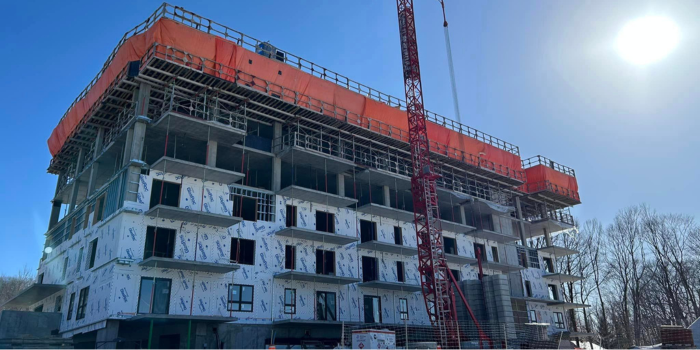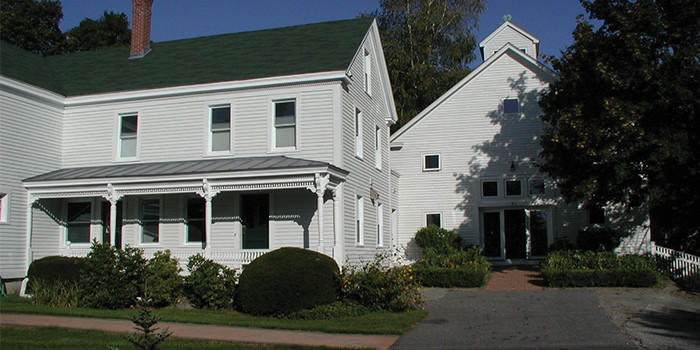Practice & Preach
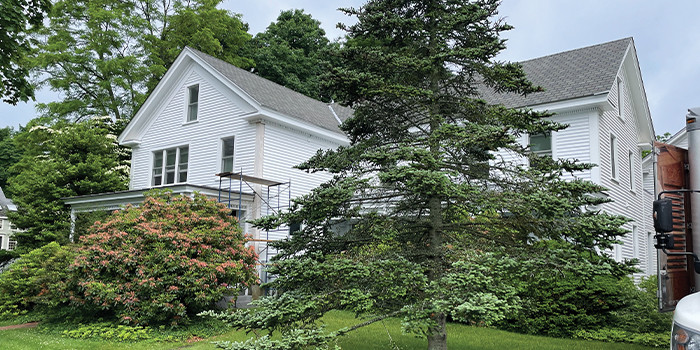

Spray Foam Magazine – Late Summer 2022 – In November 2021, SES Foam wrote Part 1 of an article in Spray Foam Magazine describing an interesting project in which spray foam insulation was installed in a crawlspace/basement in Massachusetts. This is not just any home, it’s the home of Joe Lstiburek, Ph.D., P.Eng., ASHRAE Fellow and Betsy Pettit, M.Arch., FAIA, both principals of the Building Science Corporation. In Part 1, we described the crawlspace/basement as having already been sprayed with foam years ago, and we recounted the homeowners’ response to our question of why they wanted more foam in an area already well insulated.
Joe and Betsy advise others to build to higher and higher energy efficiency standards and they practice what they preach. Their house is over one hundred years old, and some areas were difficult to air seal and insulate. Over the years they’ve used a lot of foam to make the old house highly energy efficient and durable. Back in 2014, Joe wrote an article in the ASHRAE Journal and later published it as a Building Science Insight article #BSI-081, which you can find on the BuildingScience.com website. In the article Joe explains his take on “Net Zero” and the reasons to always push for more insulation and air sealing.
These are the core recommendations from the article for residential buildings:
R-5 windows
R-10 slab insulation
R-20 basement insulation
R-40 wall insulation
R-60 roof insulation
Airtightness of 1.5 ach@50 Pa or less
Heat recovery on ventilation
LED lighting everywhere
AFUE 95% - sealed combustion condensing for furnaces, water heaters and boilers
SEER 18 or more for A/C
HSPF 10 or more for heating
Appliances from the top 10% of Energy Star®
I ran an energy analysis of projected energy consumption using the 2009 IECC as the baseline versus Joe’s prescription on a production 2500 ft2 home using REMRate energy modeling software. I included climate zones 2-6 (or Houston to Minneapolis) to assess the cost effectiveness and benefits of this best-in-class technology. In all climate zones I assumed a $20k upgrade. There are some cost trade-offs because of the high-performance envelope. Houston’s peak cooling load was 12.9Kbtuh or 2000 ft2 per ton, so the equipment can be halved in size across the board.
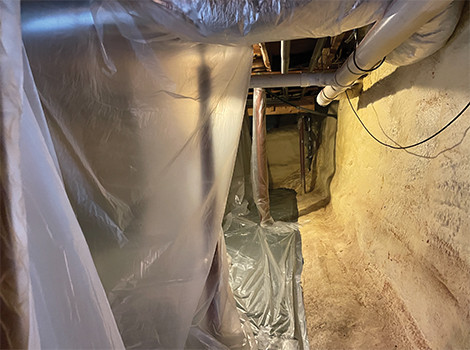
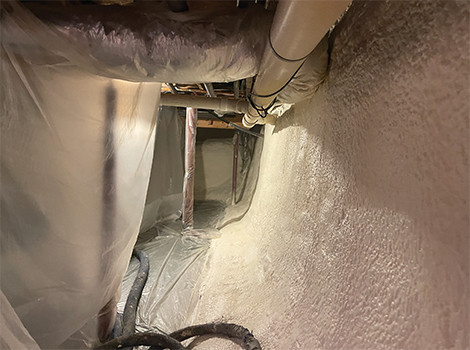
BEFORE (top) & AFTER (bottom): The spray foam contractor used an effective masking technique by spraying good-looking foam over the existing foam and applied an intumescent coating to a 15-minute thermal barrier equivalence.
Based upon 4.5% interest over 30 years the cost per month for this upgrade was $100. In all climates the savings exceeded the cost per month with annual savings exceeding $750 in Minneapolis. All the models had a Home Energy Rating System (HERS) index in the low to mid 30s. This makes a lot of sense in all climates and in many cases the failure to assess the cost over time is essentially throwing $20k – $30k away over the life of a mortgage. With a HERS index in the mid 30s getting to zero energy is easy.
It all makes more sense since the original SPF spray job was less than his recommendation so he wanted to exceed these numbers, because he could. Some of the home was not as accessible, but since the crawlspace was, he wanted to maximize the R-Value and make the foam look great.
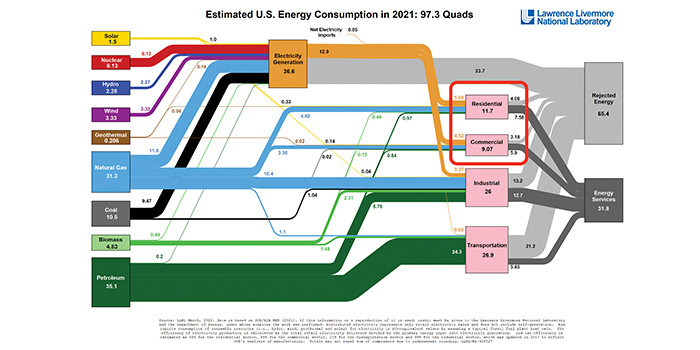
SES Foam arranged for Mass Green Insulation to spray the job using SES Nexseal 2.0® LE, low exotherm foam with high R-Value and excellent yield. Mass Green Insulation is a Massachusetts based contractor with over 20 years of experience in the spray foam industry and a certified SES installer since 2017. They used an interesting and effective masking technique, sprayed good-looking foam, and applied an intumescent coating to a 15-minute thermal barrier equivalence.
Before starting the job, the SPF contractor had a three-part ventilation plan in place. They planned to ventilate during the spray, shortly thereafter and forever thereafter. Ventilation during the project was relatively easy because hanging plastic to mask off the target area created a small space. They continued running the fans until there was no residual odor, which was not long because the Nexseal 2.0® LE spray foam has little odor to begin with. The third part of the ventilation plan, to ventilate “forever thereafter,” was already in place with a ducted HRV system.
The plan was to only spray the perimeter walls, so the crew hung plastic from the ceiling around the room, leaving a corridor for the sprayer to foam the walls. This saved having to cover the entire floor, stairs, mechanical system, and reduced the volume of ventilation needed to provide good air exchange. They also covered the front porch where the hoses ran to the entrance to keep the jobsite tidy.
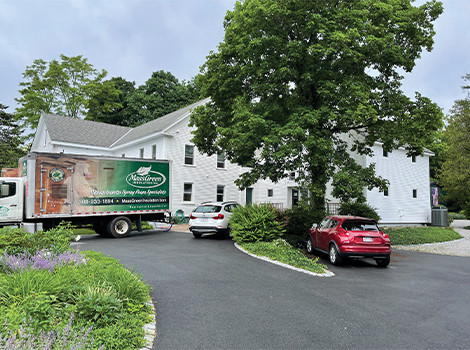
SES Foam arranged for Mass Green Insulation to spray the crawlspace using Nexseal 2.0® LE.
The sprayer masterfully applied about three inches of Nexseal 2.0® LE, doubling the R-Value to around R-40, which makes this crawlspace/basement ultra-insulated according to BSI-081.
Building Science Corp. advocates for beyond code insulation, which is allegedly easier with spray foam than any other insulation product. This is critically important as we predict our future energy needs because experts believe we’ll need vastly more energy than we can produce in the years to come. If this is true, we will have no energy for new homes and buildings to be built. Building to higher energy standards now means we slow the rate to which we run out of generating capacity, and the only thing we can do to get more capacity (short of building new power plants) is to insulate and air seal our existing homes and buildings. The very best way to do this is with spray foam!
Joe and Betsy are doing their part. Spray foam contractors are quietly helping to save energy and money for customers and every kilowatt they save is a kilowatt of additional generating or production capacity we can use for growth and economic expansion in the future.
“If we can reduce the energy requirement for residential and commercial buildings and reduce rejected energy, we’ll be doing our share,” says SES Foam. “There’s no other product or industry that can have such a profound effect on our future energy security as spray foam.”
Contact SES Polyurethane Systems
If you have any questions about the referenced articles, material selection or any of SES’s products:
Phone: 713-239-0252 // Website: www.sesfoam.com
*Spray Foam Magazine does not take editorial positions on particular issues; individual contributions to the magazine express the opinions of discrete authors unless explicitly labeled or otherwise stated. The inclusion of a particular piece in the magazine does not mean that individual staff members or editors concur with the editorial positions represented therein.
Disqus website name not provided.




